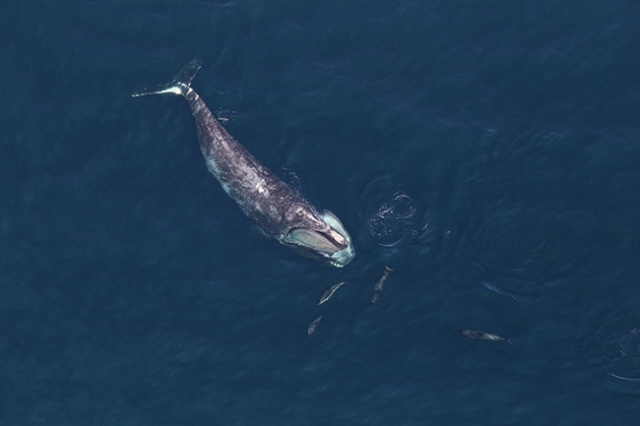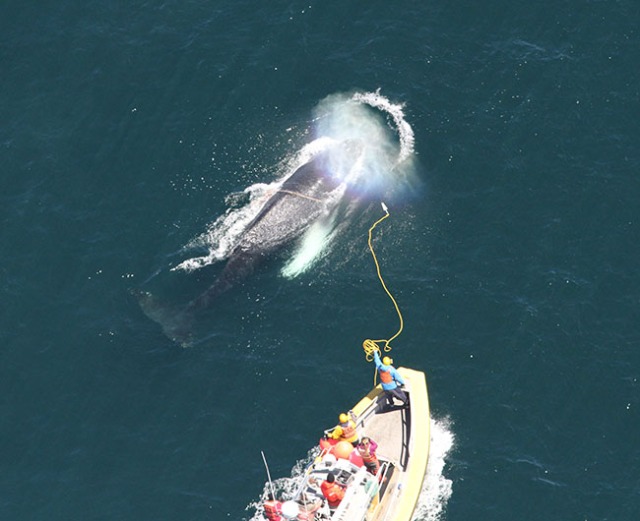
Free-swimming North Atlantic right whale photographed during 2016 NOAA Fisheries aerial survey. Photo credit: NOAA Fisheries/NEFSC/Allison Henry
On a Mission
Part of the NOAA Fisheries mission is to conserve and recover protected species while supporting responsible fishing and resource development. But what happens when forging ahead on one part of this mission seems to mean falling behind on another?
Case in point: endangered North Atlantic right whales and the Northeast’s American lobster fishery. These rare whales are losing ground after two decades of slow recovery; a major cause of death among adults in the population is entanglement in trap/pot gear, most of which is set in the American lobster fishery.
The stakes are high and humble me. The law requires us to recover North Atlantic right whales and to support sustainable trap and pot fisheries. My job – and the Northeast Fisheries Science Center’s job – is to provide the science to support both of these requirements.
It Takes a Team
If protecting whales and supporting fishing were easy, it would not need an intense effort to find solutions. Fortunately, a large team of people with a shared concern for the well-being of whales and fisheries is hard at work on the problem.
This team – called a Take Reduction Team – is required under federal law (the Marine Mammal Protection Act) in situations just like this one: when a commercial fishery poses a high risk to a marine mammal. It’s a way to bring people with fishing, fisheries, and marine mammal knowledge and skills together to find solutions.

NEFSC aerial survey team photograph of a large whale disentanglement response. Photo Credit: NOAA Fisheries/NEFSC
The Science of Risk Reduction
In October 2018, the team asked for better decision-making tools. Responding to this request, scientists at our science center got to work. Across our research divisions, people applied our expertise, data, modeling skills, and capacity for visualizing data to get insights about the interplay of whales and fishing in ways that were out of reach just a few years ago.
The result of that work, I am pleased to report, is an important new tool that supported the team as they developed a set of proposed actions for pot and trap fisheries to substantially reduce the risk they pose to right whales.
Last week, the take reduction team came together in Providence, Rhode Island, in an intensive four-day meeting to craft ways of reducing risks posed to right whales by lobster gear across the region. This new tool helped team members evaluate just how much risk reduction was likely under various scenarios, based on the likely presence of gear and whales in an area, and how seriously the gear could injure a whale.
Take reduction team members took that information, asked for more, and worked through numerous options specific to each lobster fishing area. Center scientists were on hand during the meeting to add more information and to use the tool in real-time as team members refined their plans.
Next steps for us are to review this work and to make the tool better.
The team’s work last week is a great example of true collaboration, both within our science center and among the people working toward solutions to a tough problem, and one of which we can be proud.
Jon Hare
NEFSC Science and Research Director
